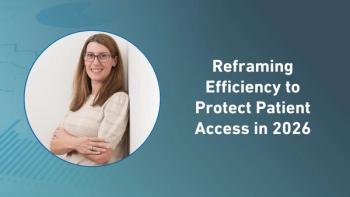
- Applied Clinical Trials-01-01-2019
- Volume 28
- Issue 1
Five Trends in Clinical Trials We’ll See in 2019
Right now, we only seek “perfect patients” for our trials, rendering many drugs potentially less safe or effective for those in demographics the study was not designed for.
Toward the end of last year, the life sciences industry was immersed in chatter about the new and the “what’s next,” picking out key trends that will define 2019. It’s a great time to get ahead of the game, but also to separate the hype from reality. Here are the five transformation trends with regard to clinical trials that I’m watching right now.
1. Data- and technology-enabled patient discovery and recruiting. Patient recruitment has been conducted in the same way for years now. First, we ask the research sites to identify appropriate patients, then we fill in the gaps with media. While we have made some headway in moving toward more effective social and digital advertising, recruitment is still largely “push” marketing. That’s been changing over the last three years as companies like Circuit Clinical and Deep6 AI begin to utilize artificial intelligence and natural language processing to “crawl” medical records to find patients for trials. Not only is this a smarter way to find qualified patients for existing studies, it may pave a pathway for discovering whole cohorts of patients before a trial is even designed.
2. Seamless patient “CRM” and retention management. With new access to programmatic browsing behavior, we are beginning to see the advent of data-driven retention and adherence solutions. Using individual-level targeted insights and trigger-based digital media, researchers and payers are more empowered to manage patient needs more proactively. For example, we can now assess a risk for dropout score for patients in trials that require rescue medications by watching online signals that expose when a patient may be experiencing early warning signs of an event (relapsed, refractory episode, AE, etc.)
3. Incorporation of real-world data into trial protocols. The more we see the advancement of digital biomarkers from social media, wearables, electronic health records (EHRs), and smartphones, the more we can begin to include real-world data in our protocol design and not just as “ancillary” or anecdotal information. There has been huge focus lately on tracking social determinants of health, for example, and Stanford has recently outlined its 400,000-person Apple Watch heart rate study. The impact of this could be enormous when you consider that right now, we only seek “perfect patients” for our trials, rendering many drugs potentially less safe or effective for those in demographics (age, race, gender) that the study was not designed for.
4. Virtual trials are the future. It is safe to say virtual trials are moving out of the proof-of-concept space into the full-implementation space. There was an interesting panel at CNS that examined all of the different virtual trial models at play. While there was no shortage of debate about what makes a trial ideal for a virtual model (heavy PK sampling need not apply!), it was clear that virtual trials are here to stay. Leaders in this space include Science37, Medable, Thread, and Medidata-each bringing something unique. Innovations include technology platforms that allow trials that operate via a single virtual meta-site, to telemedicine, and even in-home monitoring via BYOD (bring your own device). These companies are not alone-most of the top five CROs are working on virtual trial operations as well.
5. Integrated research organizations usher in the clinical-research-as-a-care-option age. While CRAACO has been a theme over the last few years, ACOs and ICOs are starting to implement frameworks within large healthcare systems that aim to bridge clinical research with clinical care. Javara, out of Winston-Salem, NC, recently announced a partnership with Wake Forest Baptist Medical Center, with the goal of marrying comprehensive clinical research services with population health initiatives. As the industry continues its shift from fee-for-service to outcomes-driven, value-oriented care, this is a logical next step and one to keep an eye on.
Angela Radcliffe is R&D Practice Lead, Life Science, Capgemini Invent
Articles in this issue
about 7 years ago
EMA Seeks Input on its Regulatory Science Strategyabout 7 years ago
Q&A: Capitalizing on Technology-Enabled Clinical Researchabout 7 years ago
The Case for Thinking Outside the HR Boxabout 7 years ago
Applied Clinical Trials, January/February 2019 Issue (PDF)about 7 years ago
FDA Sets Goals for Improvement in Drug Development and Approvalabout 7 years ago
Can Data from EHR Systems Be Trusted in a Trial Setting?about 7 years ago
Weighing the Benefits of RBM Implementationabout 7 years ago
Analytics and Metrics Help Pinpoint Costs of Study Start-UpNewsletter
Stay current in clinical research with Applied Clinical Trials, providing expert insights, regulatory updates, and practical strategies for successful clinical trial design and execution.



